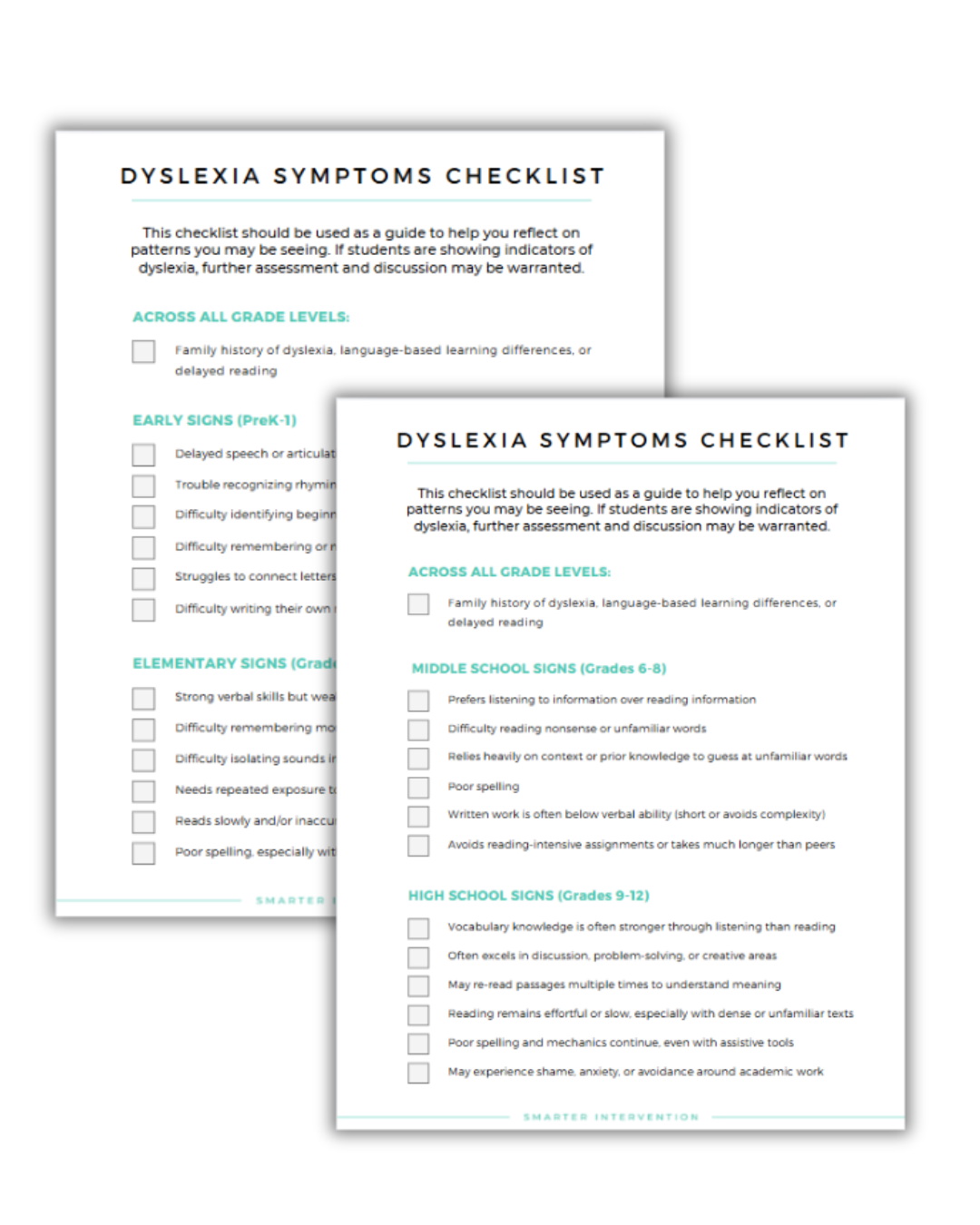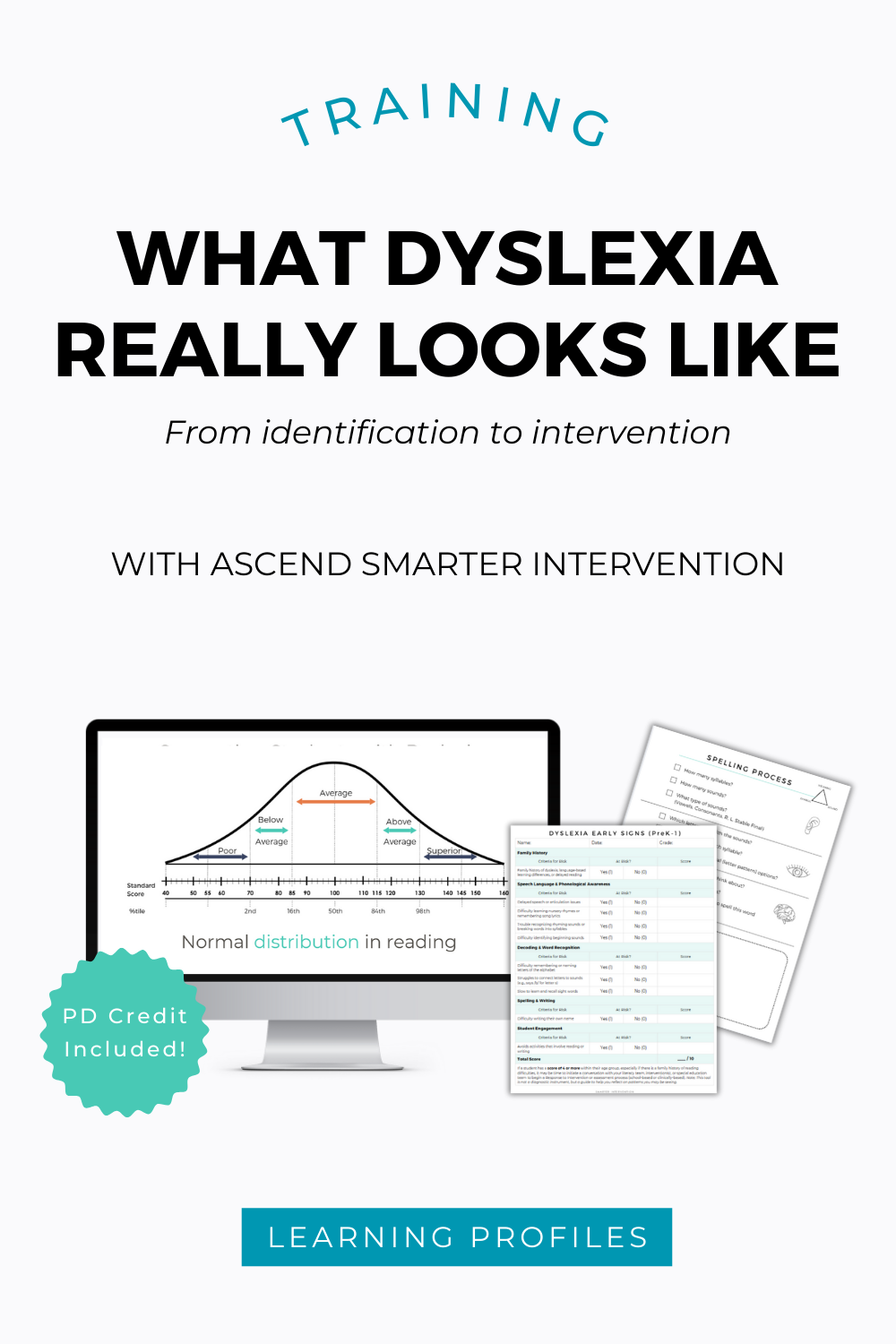Dyslexia Symptoms Checklist
When a student struggles to read or spell, it’s easy to feel uncertain. Is it a developmental delay? A temporary phase? Or something deeper, like dyslexia?
To help you get clarity, we created a free Dyslexia Symptoms Checklist. It’s designed for both educators and families, and highlights specific signs to look for in a child’s reading, writing, speech, and classroom behavior.
What’s on the Checklist
The checklist includes common traits and behaviors grouped by:
Early learning signs (like trouble with rhyming, letter naming, or nursery rhymes)
Elementary signs (such as difficulty sounding out CVC words or guessing at words when reading)
Middle school signs (like preferring to listen to information rather than reading)
High school signs (including effortful or slow reading)
These signs across the different age/grade levels matter because they reflect how the brain is processing (or struggling to process) language. And when we start to see multiple indicators from different categories, it’s worth digging deeper.
How to Use the Checklist
This isn’t a diagnostic tool, but it is a tool to help you:
Recognize potential patterns
Begin documenting your observations
Communicate concerns clearly (with teachers, parents, or specialists)
Decide whether it’s time to pursue a formal evaluation
Tip: Print a copy and keep it on hand to refer back to for students you are concerned about. Jot down quick notes, what do you see consistently, not just once.
What If I Notice a Lot of These Signs?
If a student checks multiple boxes, especially across categories, it may be time to:
Start a conversation with your school team, interventionist, or evaluator
Request screening or formal assessment for dyslexia or a related learning difference
Explore structured literacy intervention (especially one that is explicit, systematic, and multisensory)
Get the Free Dyslexia Symptoms Checklist
We’ve created a free checklist that highlights the most common signs of dyslexia across ages and settings, including what to look for in conversation, reading tasks, and writing.
👉 Download the Dyslexia Symptoms Checklist here!
Want to Go Deeper?
Check out our On-Demand Professional Development Training:
“What Dyslexia Really Looks Like: From Identification to Intervention”
In this training, we walk through:
How dyslexia presents differently across ages and grade levels
Why some students “fly under the radar” until academic demands increase
Practical ways to identify patterns early and connect students with the right support (from accommodations to instruction
How to manage conversations around dyslexia
You don’t want to miss this one!


